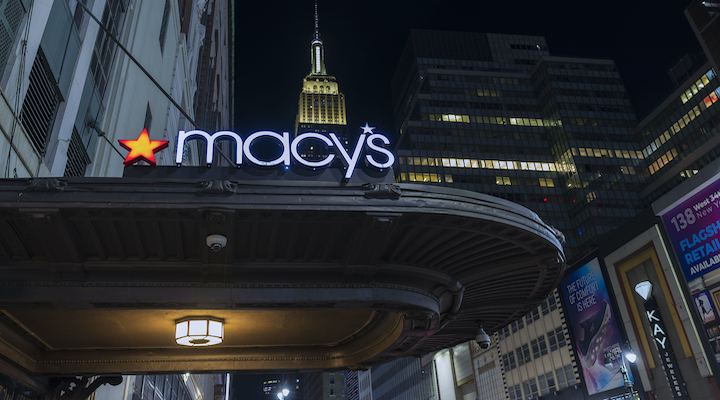Macy’s latest unhappy set of results confirms two things: First that a consumer slowdown is in play, with shoppers pulling back on discretionary spending – something that clearly affects Macy’s. Second, however, as Macy’s 8.4 per cent sales decline is significantly worse than the overall market, they tell us that the once iconic retailer is firmly on the back foot.
This puts the better performance achieved during the pandemic years into perspective: Macy’s was a beneficiary of circumstance rather than the author of its success. With the advantages of a strong economy now firmly behind us, Macy’s is back to being one of the laggards in retail.
Although the current sales decline is worrying, more concerning is the fact that since the same period in 2019, Macy’s sales are down by 7.5 per cent. Over this same period, non-food retail spending in the US has increased by around 32.1 per cent. This shows that Macy’s is not only running in the opposite direction to most other retailers but that it has lost a very significant amount of market share.
This throws the company’s entire strategy into doubt. Management can put out all the warm platitudes it likes, but it does not change the fact that Macy’s is a retailer in decline. Unfortunately, in the present environment, the pace of deterioration will only accelerate.
At the heart of Macy’s issues is an incredibly sloppy attitude to retail. There is a lack of care in merchandise selection and a complete breakdown in how that product is displayed in stores. All too often customers are greeted with a hot mess that would be unacceptable in a mass retailer like Walmart, let alone a mid-market department store like Macy’s. This dissuades customers from buying and it eventually deters some from visiting. This in turn makes weakens the productivity of stores. Ultimately this makes it much harder to invest in improving shops. This vicious cycle is one management needs to break if it wants to avoid the same fate as a long list of defunct department stores.
Management’s past record of even admitting to problems, let alone remedying them does not give us hope. However, there are two small crumbs of comfort. The first is a new CEO, Tony Spring, who will take the helm next year. While past internal appointments have been disappointing, we are hoping that Tony’s background in luxury and merchandising will help produce a change in Macy’s approach to retail.
The other area of hope comes from the renewed emphasis on private labels, in the form of the new On 34th brand. This collection is far better than many of Macy’s existing lines and has been assembled with some care and attention to detail. To date, standards of presentation in store are relatively strong and we hope they remain that way. While On 34th cannot in and of itself pull Macy’s out of the mire, it is an example of the type of initiative that is needed to start moving the dial. All that said, we are not holding our breath as too many previously hopeful ideas have been squandered and sullied.
Looking in more detail at the numbers reveals the extent of the challenges ahead. Not only have sales declined, but Macy’s has swung to a net loss of $22 million. While this is more than manageable for the business, it is a consequence of lower margins which have come despite relatively good inventory management. Off the back of a weak outlook, there is a danger that profitability will be eroded still further which will make investment even harder to justify. It may also prompt Macy’s to make further cuts which could result in even worse standards and conditions in stores.
Effort, imagination, creativity, and determination are needed to turn Macy’s around. Sadly, these are qualities that Macy’s has traditionally lacked, so it remains debatable as to whether a revival can be engineered.
- Neil Saunders is MD at GlobalData.






